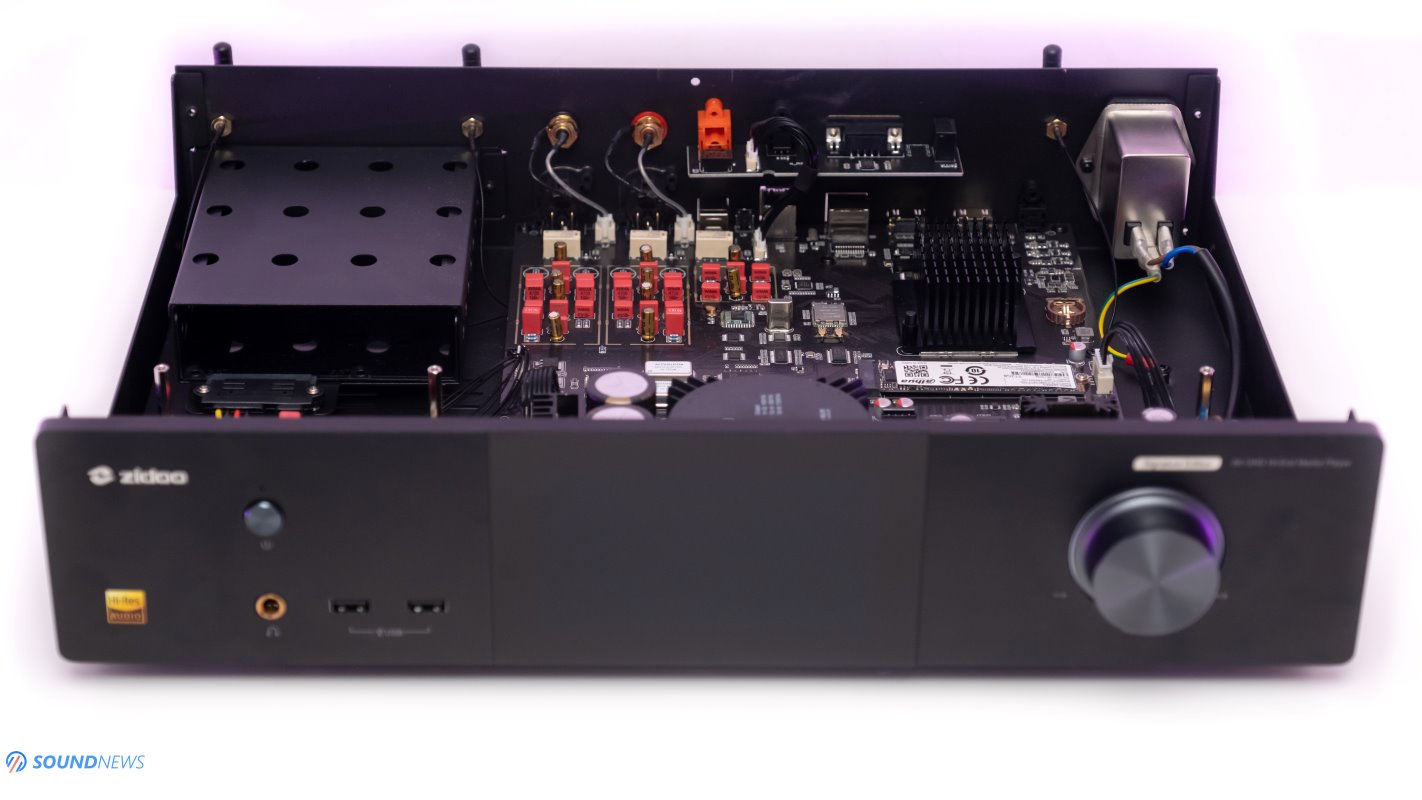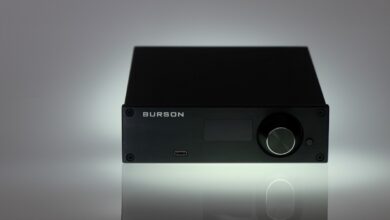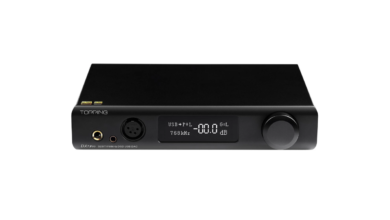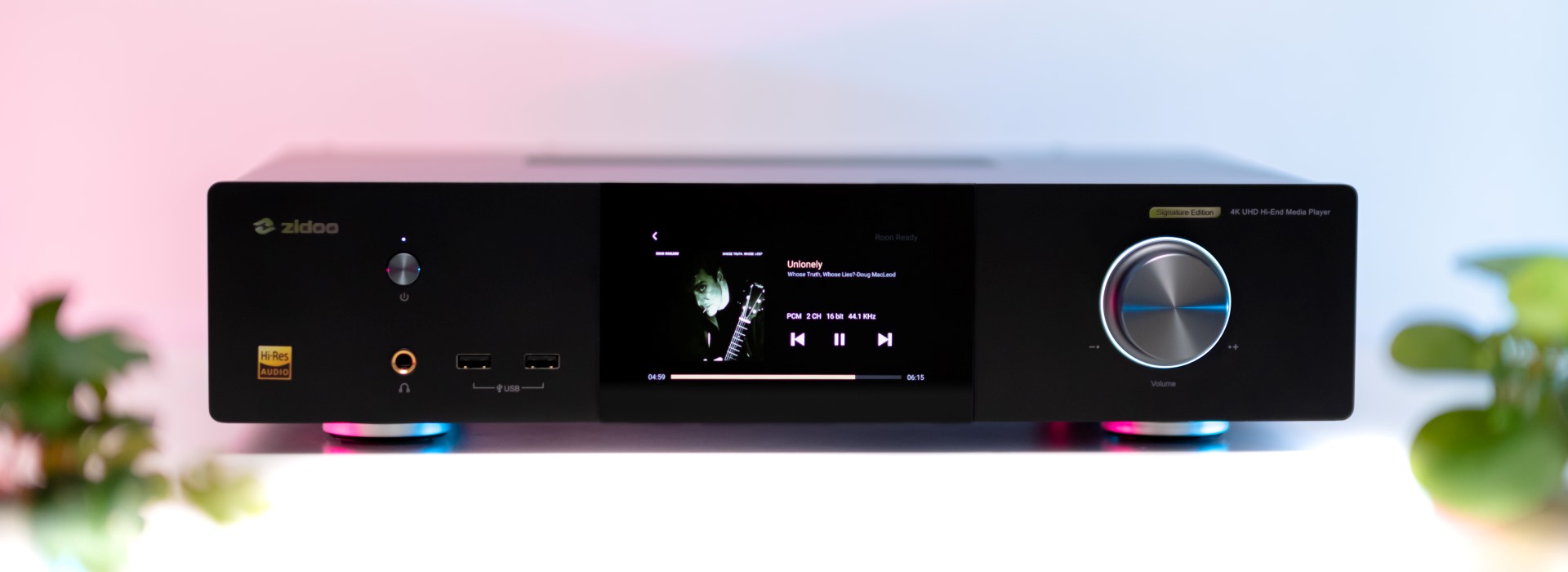
My Video Review:
When a product spec sheet reads like a common HiFi review around the interwebs, you know you are dealing with something out of the ordinary. Since yours truly is far from an ordinary chap, I’ll probably quadruple the amount of information and if a Belgian ale sits on my table and a lengthy playlist calls my name, then prepare yourselves for a long storybook. Immediately after dropping my EverSolo DAC-Z8 video review, my mind clicked instantly, as these guys were part of a bigger group covering everything that has to do with multimedia, not only with sound.
I had limited experience with dedicated music streamers and media players, but after the planets have aligned, Zidoo asked if their newest and greatest NEO Alpha do-it-all thingy could help with my future content creation. F@#* yeah! I replied, as besides a Raspberry Pi, an iFi ZEN Stream, and a couple of DACs that had built-in streaming capabilities, I never tried a proper All-in-One unit in the comfort of my home. We already have a name and a long spec sheet, but what NEO Alpha is truly capable of? Take a long breath and find a seat, as Zidoo went overboard with everything that has to do with audiophiles & cinephiles, and let me explain to you why.
First and foremost, it’s a wireless & wired streamer, supporting Spotify & Tidal Connect, it can work as a Roon endpoint which I used for the most part and I’m being told that additional streaming services will be added in the future via firmware updates. It can also work as an offline music player, playing tunes from a preinstalled 512 Gb M.2 SSD drive, and a 2.5/3.5” HDD/SSD expansion bay found on its back will help with your music & movie expansion. Movies you say? Yep! This fellow won’t play a few movies, but all possible formats, HDR standards, and framerates. Lastly, it can work as a high-performance DAC, preamplifier, headphone amplifier, and Bluetooth receiver, all of which were tested for more than two months around here. The biggest surprise I had is that everything worked flawlessly, I never had a hiccup, an error, a network connection issue…or anything. No matter what functions were being used, it just kept on going always delivering or surpassing my expectations. As you can guess, as a centerpiece unit in an audiophile or cinephile setup, NEO Alpha is massive as the Alpha Centauri and heavy as my Rockna Wavedream Signature and it’s quite a costly unit, going for $3000 in the USA and €3000 respectively in Europe. Does it live up to the hype? Let’s find that out!
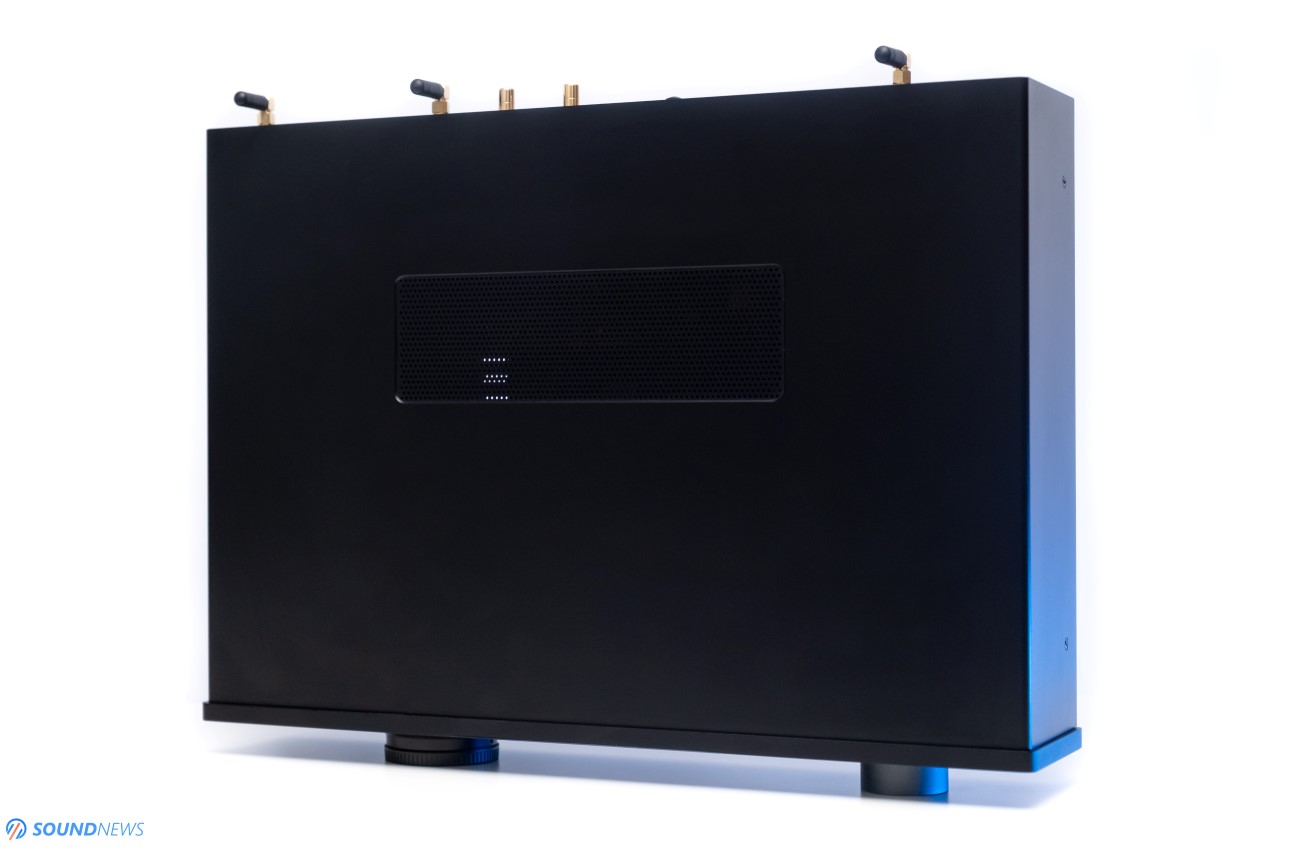
Design & Build Quality
Forget punched steel cases of the usual world-renown receivers and do-it-all wonder boxes and while I’m not dealing with a thick CNC-machined case, its bent all-aluminum chassis looks just fine to me. It has rounded corners, a ventilation area above the analog output stage that helps with heat dissipation, it has four massive metallic feet with foam inlays that will absorb vibrations coming from within its electronics and there’s a thick CNC milled front panel, which added confidence that I’m dealing with a high-quality product. In the end, we got a standard 430 mm wide enclosure with an all-aluminum alloy reinforced chassis that looks simple and modern enough.
The big surprise was seeing a 5” high-resolution OLED touch-screen spotting an infinite contrast ratio. It has nicer colors than my TV and PC monitor and it’s incredibly vivid and bright, which seems like a big plus when used as a streamer in a stereo setup. Its volume wheel doesn’t offer a decent physical resistance which I didn’t like, but it is a stepped volume attenuator that can work in 0.5 or 1dB steps and it’s lit with small LEDs so you can see it in the dark. Instead of a single wireless antenna found on most HiFi devices, Zidoo upped their game and added two more wireless antennas which will cover a much wider area without losing the signal. My Gold Note DS-10 Plus was sometimes losing the signal strength in the living room, something I hope won’t happen with the NEO Alpha.
There are only two screws on its sides, the rest were moved on the back for a cleaner look and at about 8.5 kilos (~19 lbs.), it is on the heavier side, adding confidence that I’m dealing with a high-quality product. At 430 x 300 x 105 mm, it is bigger than most all-in-one units I tested around here, but it has the same width as a Rockna Wavedream Signature and a similar one with my Chord Electronics stack. Apart from a plasticky volume wheel that offers a lower physical resistance, it still looks and feels like a proper future-fi product.
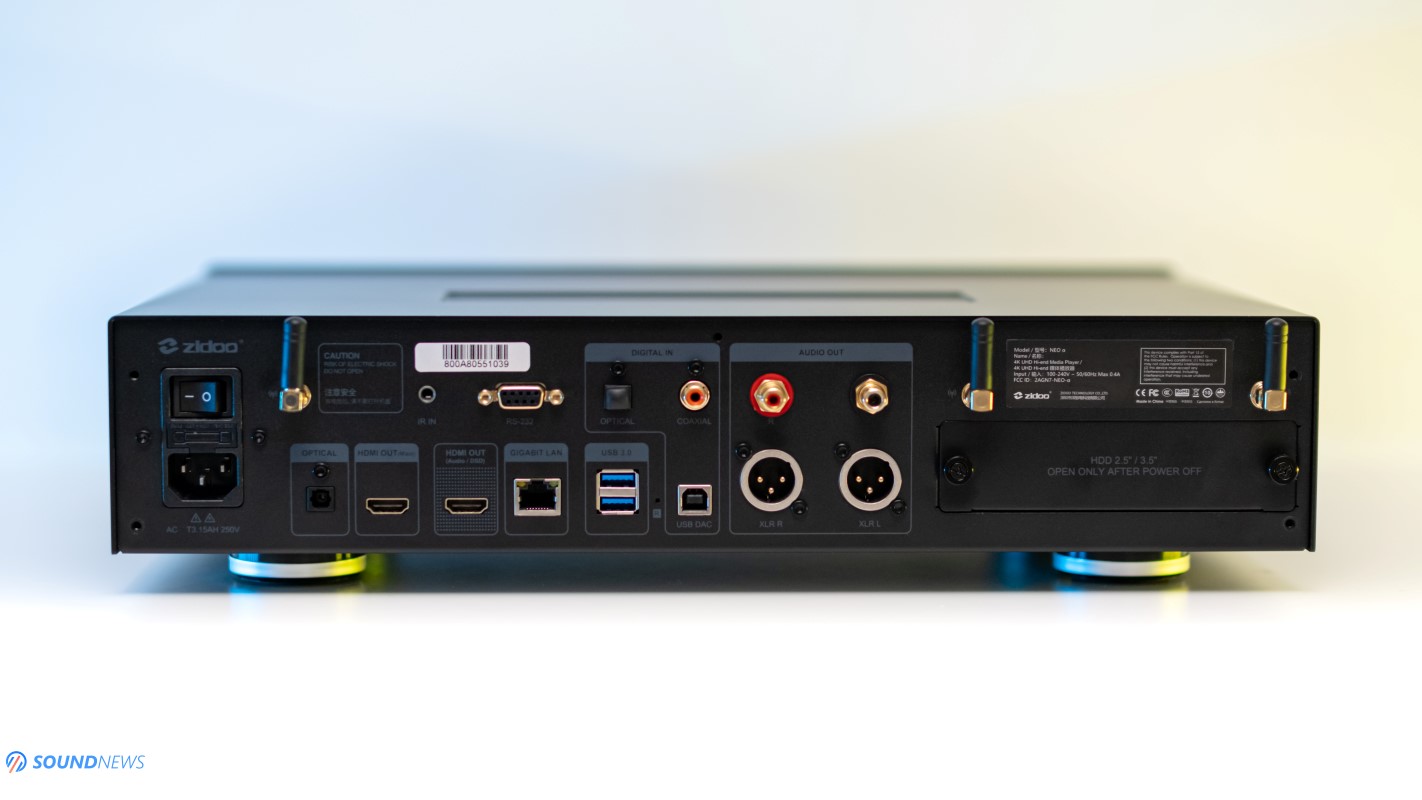
Controls & Connectivity
NEO Alpha has a straightforward and intuitive front panel, with a 6.35mm (1/4”) headphone jack, an On/Off button, and two USB type-A ports to its left. An OLED touch-screen is located in the middle and you have a volume wheel on the right.
It has one of the most impressive back panels I’ve seen thus far, just look at that connectivity! When it comes to inputs, there aren’t that many units than can challenge it: there’s a USB type-B, Coaxial and Optical inputs which will unlock its built-in DAC section, two USB Type-A ports are used to connect third-party DACs or for storage expansion and there’s a Gigabit LAN input (RJ45) in case you don’t want to use a wireless connection for music streaming. When it comes to digital outputs, you have a main HDMI output, another HDMI output used for audio channels only (don’t mistake it for an I2S output) and you have an optical output just in case an audio/video receiver will follow. You can see three wireless antennas which are working as signal boosters used for Wi-Fi and Bluetooth and on the far right you can spot a 2.5/3.5” HDD/SSD bay which will expand the internal storage, up to 18TB of ROM memory!
On the analog side, you have your usual RCA and XLR outputs which can be fixed or variable, meaning that it can be used as a DAC or as a DAC + Preamp combo if you please.

Tech Inside Zidoo NEO Alpha
When I’m getting new toys to play with, I would always pop their hoods, as the good performance starts with a good PCB design and component selection. Their sister company EverSolo has experience in building top-grade electronics, as DAC-Z8 looked outstanding on the inside and I hope to see a similar layout with the NEO Alpha.
First and foremost, high-end audio starts with an outstanding power supply design and the first thing to know is that NEO Alpha uses a dual hybrid power supply, combining a switching and a linear and regulated power supply in the same chassis, getting advantages from both which is low ripple and noise, as well as fast transient response and high efficiency. Although it uses an impressive dual power supply design, there are three power stages in there, starting with a huge EMI filter that will clean up the power lines, a switching mode power supply follows, and then an oversized linear transformer which is surrounded by filtering caps and voltage regulators. About a third of the internal space is being used by the power supply and that already tells me a few things. These guys are serious about clean power, which is essential for an immaculate audio and video performance.
At the heart of its digital-to-analog conversion is staying a flagship ES9038 PRO 8-channel DAC chip from ESS Technologies. While newer ES9039 PRO chips are already on their way to audio designers around the globe, spec-wise…those aren’t any better. Zidoo and EverSolo gathered plenty of experience with ESS silicon that is powering all their units.
An XMOS XU-216 digital receiver is on board which doubled the processing power of the previous generation and quadrupled the RAM size, which unlocked MQA, High-Res PCM, and DSD512 playback.
Dual high-precision Accusilicon AS318-B femtosecond clocks are present, one used for a multiple of 44.1kHz sample rates (88.2, 176.4, 352.8 & 705.6 kHz) and another one for multiple of 48 kHz sample rates (96, 192, 384 & 768 kHz) which should lower the incoming jitter as much as possible and improve the timing.
The current-to-voltage conversion and analog output stage consist of several dual op-amps and plenty of discrete components as resistors and diodes, accompanied by WIMA reds and ELNA Silmic II caps and finishing with OMRON relays. This isn’t your usual op-amp-based analog output stage, but more like a hybrid one, similar to that of the Gustard A26 & R26, but not exactly as impressive.
The headphone amplifier module is encapsulated in a metallic cage that should lower incoming EMI and RFI noise. After removing the top plate, a single OPA1612 dual op-amp was revealed to me and two BUF634A 250mA buffers, which should provide a healthy current output for power-hungry low-impedance headphones as planar magnetics, but more on that later.
A flagship QCC5125 Qualcomm Bluetooth receiver is also on board that supports all the nicest codecs as SBC, AAC, AptX, AptX-HD, AptX-LL, and LDAC. Its antennas are working as wireless boosters and its operating distance should be much wider than the single antenna units I tried before.
One of the most interesting features is the wired & wireless streamer which can use the internal DAC section or third-party DACs attached to the USB-A ports found on its back. If you have a Spotify or Tidal account or can stream such content directly without the need for additional settings, just make sure your smart device and NEO Alpha are connected to the same wireless network. I’m being told that additional services will be added in the future via firmware updates which sounds promising. Apart from Spotify & Tidal Connect, you can use Apple’s AirPlay, DLNA, and UPnP are supported, and the coolest of all: it is Roon enabled! It can be used as a Roon endpoint together with a Roon core installed somewhere around the house, which I will be testing soon.
Moving on to its media player which consists of music or video playback, NEO Alpha is powered by the Realtek RTD1619DR ARM Cortex-A55 hexa-core CPU and by the ARM Mali-G51 GPU, together with 4GB of DDR4 RAM and 512 Gb of M.2 SSD ROM memory, it can play any audio or video formats available. The RTD1619DR chipset was designed specifically for media playback which incorporates all 4K HDR formats (HDR10/HLG/HDR10+/Dolby Vision), 12Bit, BT.2020 wide color range, and YCbCr 4:4:4 chroma subsampling. It supports all Dolby Vision profiles (4, 5, 6, 7, 8 all levels) including dual layer profiles 4 and 7 using the base layer + RPU. It also supports P7 BD-ISO/MKV/MP4 MEL&FEL, P4 MKV/MP4 MEL&FEL, P5 MKV/MP4, and P8 in MKV/MP4 and in addition to Dolby Vision Direct and Dolby Vision LLDV, Dolby’s VS10 HDR processing engine can improve dynamic range for all HDR material.
Whoa…that’s a very long feature list and on top of that, you can install third-party Android apps, including games, emulators, Youtube, Microsoft Office, browsers and so much more.
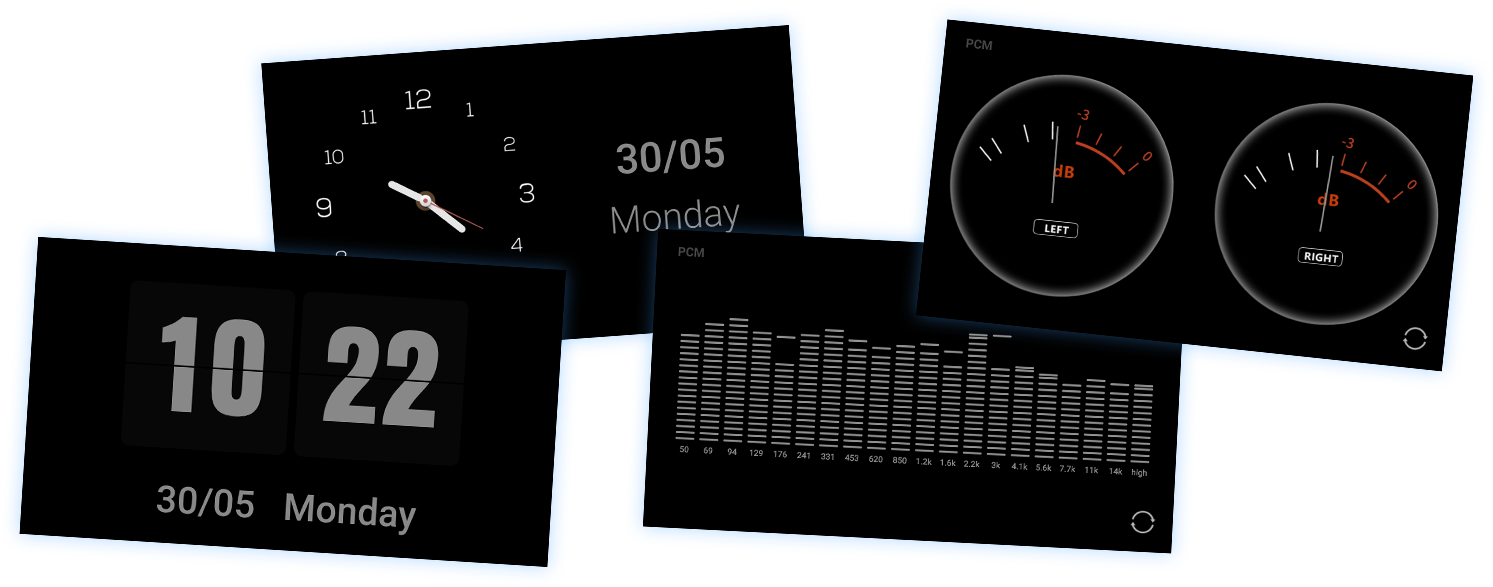
Menu Settings
The most important thing to know is that Zidoo NEO Alpha offers user menus! The first one can be seen on its OLED screen and it’s the easiest one to use, a much deeper user interface can be accessed on your TV after connecting it via HDMI and the third one can be accessed from your smart device, after installing the Zidoo Controller app. I’m going to mention the first option only, as the second and third ones are way more complicated.
After powering it on, the following bubbles will appear on its touch-screen:
- Music – shows the content stored on the internal SSD or external flash drives. It’s simple and intuitive, you can browse by folders, artists, and albums and you have a search function that comes in handy
- Media Center opens up six additional bubbles: File Manager, DNLA, AirPlay, Roon Ready, Spotify, and Tidal Connect which are self-explanatory features
- Source In lets you choose the digital input, but also the digital output and this is where you can enable USB output to an external DAC
- Settings bubble lets you configure Network, DAC, Display, and General settings. An About bubble lets you update its firmware or reset to factory settings. The Control Center bubble will reveal an Android and iOS QR code. Scan it and install the Zidoo Controller app.
Its touchscreen interface is quite simple and if you need deeper customization (especially for its video player) then may I suggest using the Zidoo Controller app or better yet – the user menu appearing on your TV.
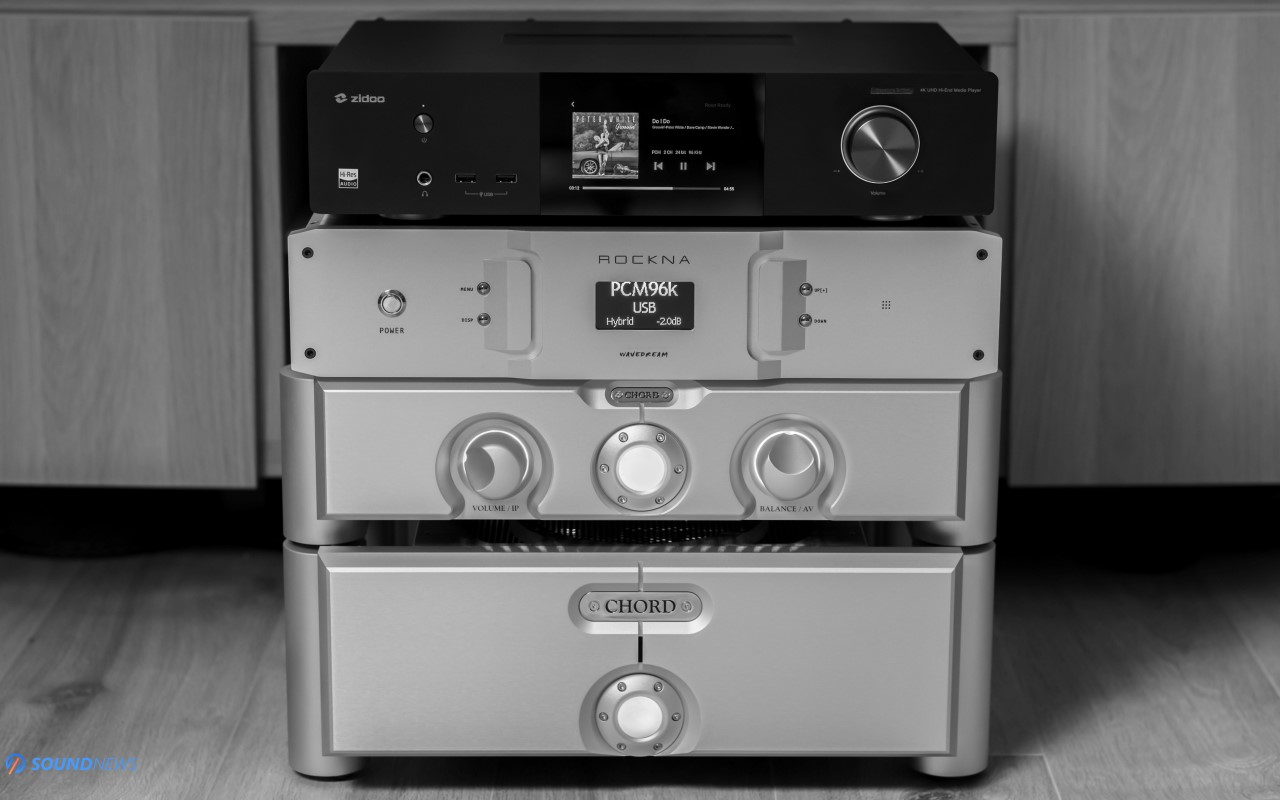
Test Equipment
Zidoo NEO Alpha does so many things, that I decided to split my review into two bigger chapters
- In the first part of my review, I’m going to check the performance of its built-in D/A converter and headphone amplifier, I will check its noise floor via IEMs and speakers, Bluetooth range, plus I’m going to connect several third-party DACs and check its wired & wireless streaming capabilities as a Roon endpoint but also via Tidal Connect. I will be using all sorts of headphones and later will be connected to a Chord Electronics Ultima 3 preamp, Ultima 5 power amp, and to a pair of KEF Reference 3 speakers which I know very well.
- In the second part of my review, I’m going to check the video performance together with an upper-class Sony Bravia TV (Sony XR-75X95J) playing back SD, HD, and HDR content.
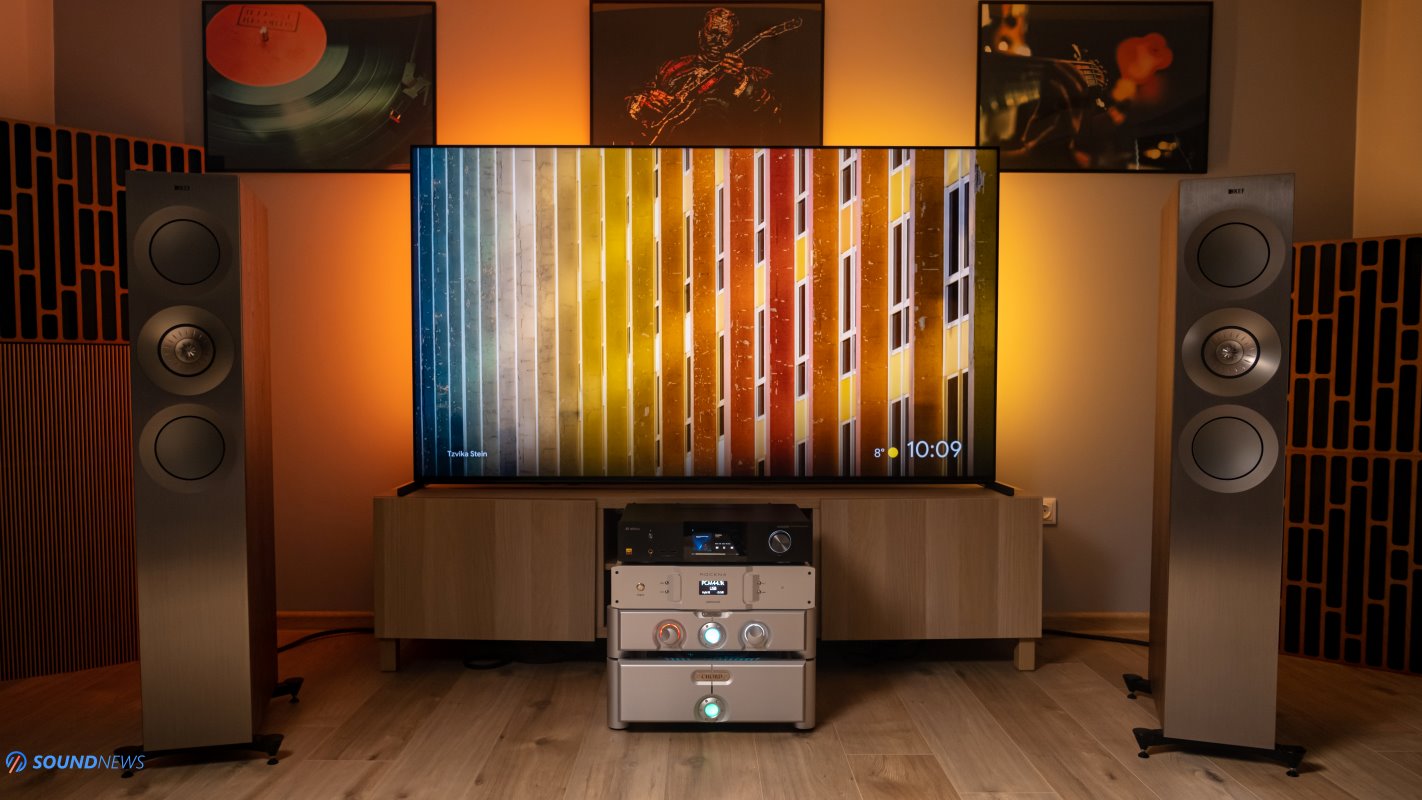
I. Sound Performance
1. Digital-to-Analog Converter
Half of my published articles were allocated for digital-to-analog converters, as I find them interesting and let’s check its built-in D/A converter performance. About a third of the internal space is occupied by the power supply implementation. It starts with an EMI filter, followed by a hybrid power supply, voltage regs, and filtering caps.
NEO Alpha follows every rule a great-sounding DAC should follow. There’s a flagship ESS-Sabre silicon that will push dynamics as high as possible, I see a high-performance XMOS receiver, audiophile-grade femtosecond clocks, a well-thought I/V stage and hybrid output combining op-amps and discrete components. Honestly, it has a nicer layout and better components than most $1000 to $1500 DACs I’m testing every week. These guys are as much into audio, as they are into video, and even without listening to the damn thing, I it should offer a relative performance with dedicated DACs north of $1000.
I connected it to a Roon Nucleus, working as a wireless streamer & DAC (playing mostly Qobuz and Tidal content), followed by a Chord Electronics Ultima 3 preamp and Ultima 5 power amp driving a pair of KEF Reference 3 stand floor speakers. A few minutes were enough to realize that I’m dealing with a formidable ESS-Sabre implementation. It offered good linearity, striking a nice balance between bass, midrange, and treble, without botching dynamics, or getting soft & thin sounding.
The big shocks came from its low-end which was strong, having an outstanding attack and decay, and incredible punch in the lowest octaves. It felt a little too exciting at first to a point of being elevated, it wasn’t very controlled, but I’m blaming a lack of burn-in. It was all over the place, which added some fun and a higher engagement level.
Doin’ it Right from Daft Punk repertoire (Qobuz / Tidal) sent low-intensity tremors throughout the living room, as even my morning coffee started dancing to the rhythm of the music. While my speakers can’t reach the lowest octaves, I still felt low-intensity ripples throughout my entire body. It wasn’t just good, it was bold & impactful, which worked great with electronic beats.
When Being Funny In A Foreign Language by The 1975 started playing (Qobuz / Tidal), Matthew’s voice didn’t lose authority, getting a strong vocal performance, something that would rarely happen on ESS-Sabre converters. I can only guess that a good deal of discrete components, a deeper Class-A biasing, and a nicer power supply left a huge mark on its midrange performance. Part of the Band is a very simple tune, it is moody, always tricking my brain into believing I’m that experiencing a live performance unfolding. Combining backing vocals with acoustic instruments and strong percussion work, transformed a simple pop song into quite a HiFi experience. The showstopper was its midrange which didn’t follow the road paved by the ESS-Sabre crowd. There is nothing of that ESS thinness and lack of emotion, planting a bit more life compared to most Topping converters, trailing behind the EverSolo DAC-Z8 and SMSL SU-10, which were among the nicest ESS-Sabre converters I tried last year.
When I moved to nasty rock, filled with treble solos consisting of non-stop snare and cymbal crashes, I already clenched my fists and started grinding my teeth, preparing for strong leading edges and clinical trebles, but luckily that never happened. Be it punk, rock, or old-school heavy metal, NEO Alpha was cruising smoothly as melting butter in a frying pan. It was smooth, relaxing, and non-fatiguing the whole bloody time. Hearing the smallest intricacies wasn’t a big deal anymore, but hearing all that information without adding glare and listening fatigue? Well, it’s a trait I wish all Sabre-based converters would have.
Two for One by Scott Henderson / Steve Smith and Victor Wooten (Qobuz / Tidal) is my all-time favorite jazz-fusion album. It has it all: a high dynamic range, crazy guitar and drum solos, and an impressively clean technical performance that will impress a hardcore music lover. We’re talking about some of the most inventive jazz-rock players that pushed this style into uncharted territories in the late ‘80s and early ‘90s. This dangerous trio created a reflection of their compositional talents and technical abilities. It’s a true benchmark when testing the limits of the stereo rig. An hour and a minute later, I was no longer asking myself if Zidoo NEO Alpha was targeted towards cinephiles or audiophiles, sounding like a high-performance D/A converter covering every musical genre.
The last thing I want to mention is the layering and soundstage, constantly bringing air into the room and spreading it around like a religion. In this regard, it wasn’t on the same level with a Gustard R26 Discrete, but I would be hard-pressed hearing a difference between an SMSL SU-10, Gustard A26, and NEO Alpha in terms of scale and stereo imaging. I liked it more than an SMSL D400EX and Topping D90SE, as it never limited the scale of the music.
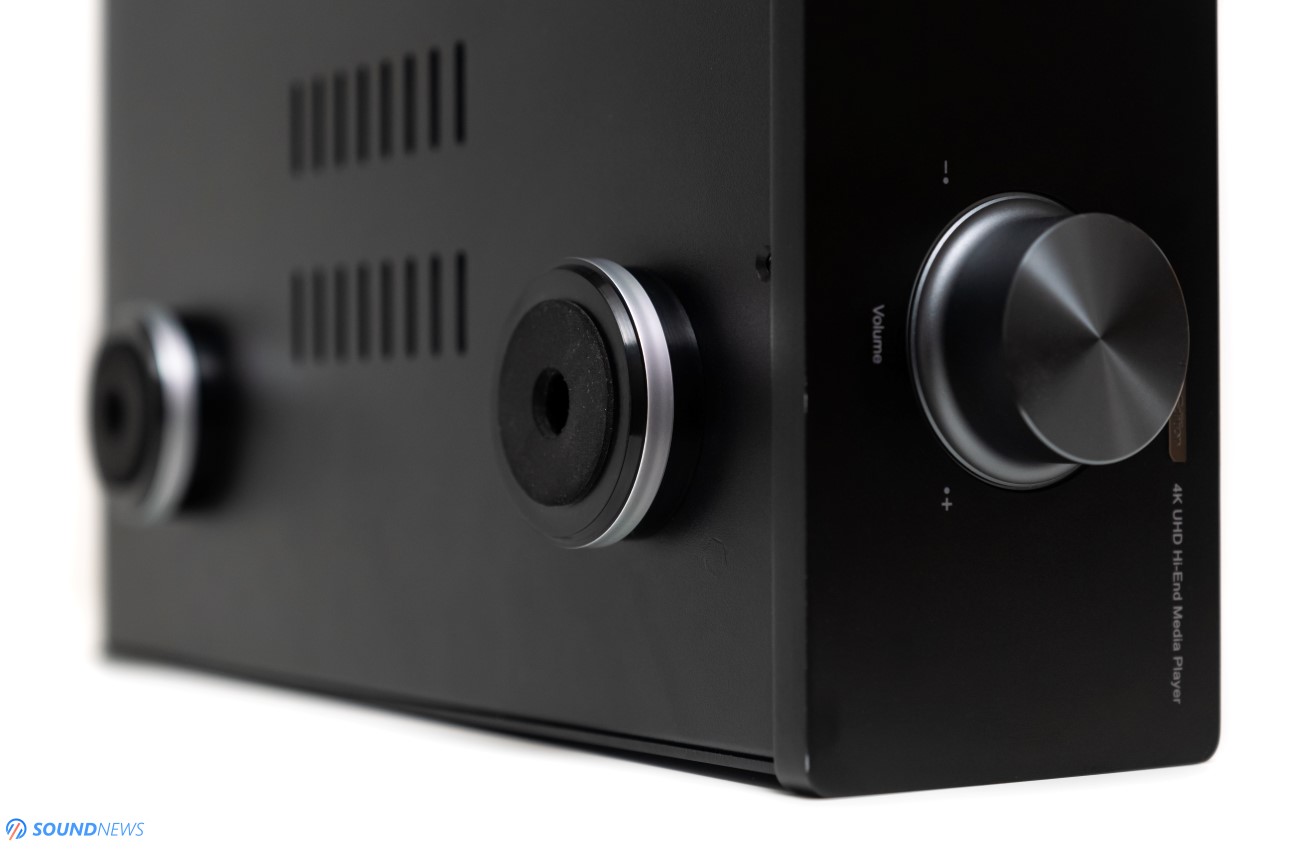
2. Noise Floor
It’s remarkable seeing a three-stage power supply in a unit like this. Usually, that’s reserved for high-end D/A converters. An EMI filter is cleaning up the mess coming from your mains, another cleaning service follows, and then a toroidal transformer will be storing & pushing power to the most crucial digital and analog stages. I’m using a Plixir Elite BAC1500 passive power conditioner in my stereo rig and a secondary Elite BAC400 at my head-fi battle station that are cleaning up the power and revitalizing tunes with improved dynamics and transients. After connecting NEO Alpha to the Elite BAC1500, I didn’t feel a difference in dynamics, tonality, speed, or detail retrieval, because there wasn’t one. The noise floor was nowhere to be spotted via headphones or loudspeakers, there weren’t nasty gremlins playing in the background, and all I heard was a clean and highly resolving sound that never raised the noise floor, nor limited dynamics in any way. This thought alone makes me happy, you don’t need to invest in audiophile cleaners taking the form of active or passive power conditioners, as NEO Alpha already works like one.
One of the craziest things I did, was connecting a pair of ultra-sensitive IEMs to its headphone jack and going all the way up volume-wise with music on pause. Can you guess what I’ve heard? Absolutely nothing, as if the unit wasn’t powered on. I’m usually getting noise from AC-powered desktop devices that have headphone jacks, but that wasn’t the case with the Zidoo, which never raising the noise, not even with high-sensitivity IEMs.
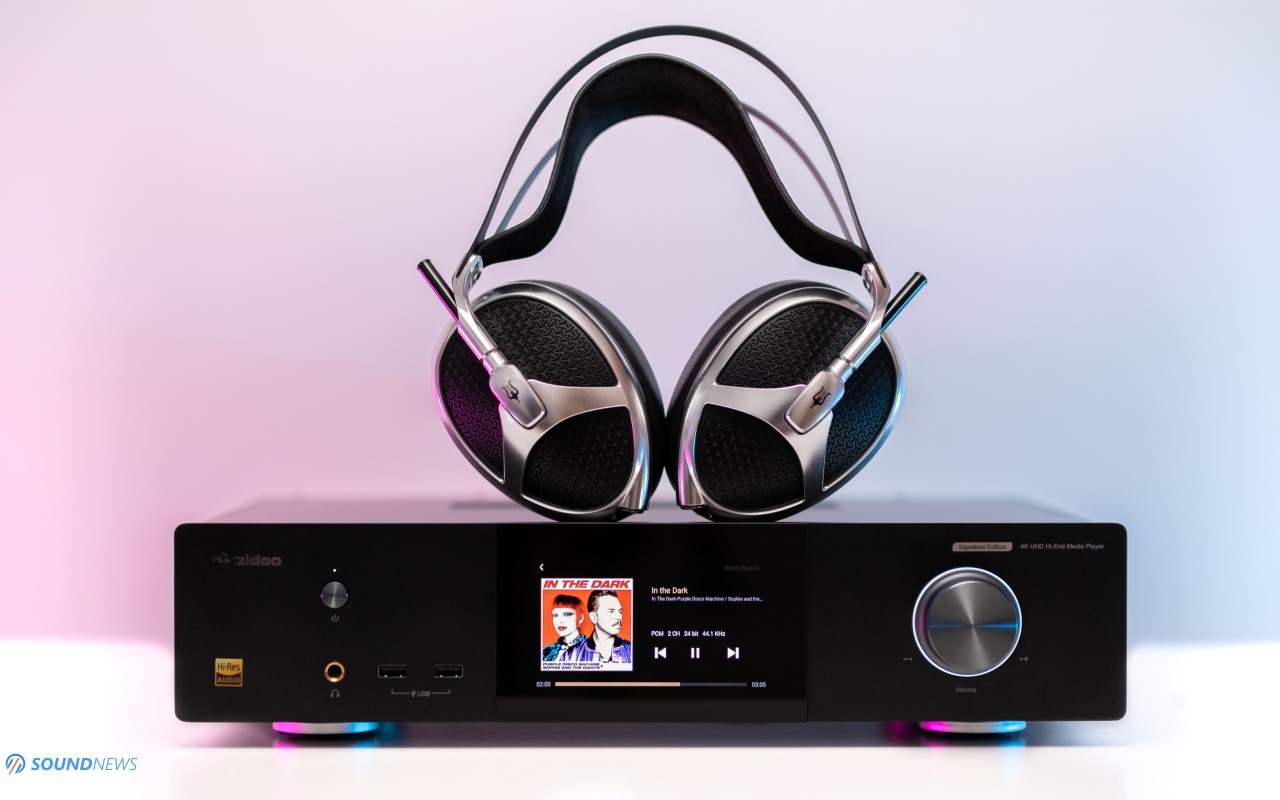
3. Headphone Amplifier
Some of you might be wondering if its internal headphone amp is any good and since we have a headphone wall at our HQ, I connected several headphones, coming in all shapes in sizes, starting with ultra-sensitive IEMs and finishing with low-sensitivity planar magnetics. We can choose from low or high-gain, but since it was noiseless with a pair of FiiO FH9 IEMs on high-gain, I never bothered moving back to low-gain.
With FiiO FH9 my usual volume level would sit in between -35 and -30 dB, leaving a limitless headroom on tap. All my IEMs sounded fun and impactful, never pressing the brakes in terms of dynamics. Hagakure by Visages (Qobuz / Tidal) sent a clear message that the dubs and positive vibes won’t stop when a fellow like this drives your little IEMs. With much higher dynamic range tracks like Unlonely by Doug MacLeod (Qobuz / Tidal) I was barely arriving at -30 dB, again leaving plenty of power for the most demanding tracks. Instead of rushing my heart rate, Doug was slowing it down, calming my feet and my head from bobbing back and forth. I closed my eyes and detached myself from the physical world, his guitar and guttural voice calmed my spirits and I went with the flow. The so-called flow is something you will rarely find on ESS-Sabre converters, but Zidoo proved that everything is possible with a careful component selection.
Moving on to harder loads as desktop planar headphones, I used a pair of Meze Elite and Erzetich Charybdis arriving at -12 dB, leaving just enough headroom for higher dynamic swings. Both performed well and sounded as put on entry to mid-level desktop headphone amps, but dynamics weren’t going crazy as it usually happens with upper-class head amps. I went ahead that took off the cover and after seeing a double op-amp & two current buffers, it was clear that its headphone jack was put there for convenience. Although it lacked a tight control and it didn’t push dynamics as I wanted, I still enjoyed it with a few headphones, but not as much as I did via XLR outputs connected to oversized headphone amps that could provide a much beefier power output. When I moved to low-sensitivity headphones like Audeze LCD-4 and Hifiman Susvara, it no longer felt powerful, big, and enveloping, losing its grip, lacking cojones & dynamics of beastly-looking headphone amps. You can’t expect miracles from a singular op-amp and two current buffers, can you?
On the bright side, cans like Sennheiser HD660 S2, Hifiman Edition XS, Meze 109 PRO, Apos Caspian & Moondrop Venus sounded good to almost great, and except for a limited soundstage that wasn’t extending at an arm’s reach, I see myself using its 6.35mm jack with mid-level headphones.
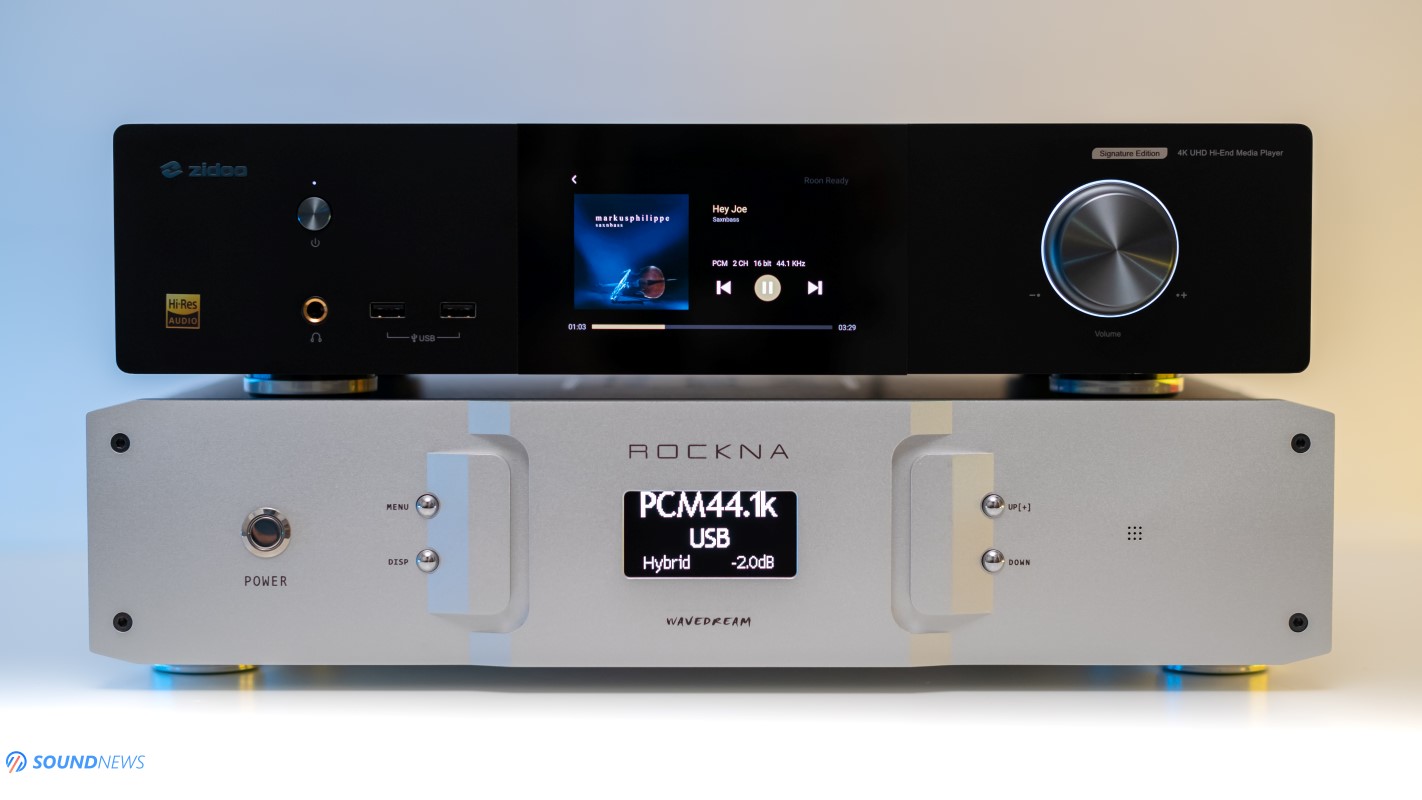
4. Wireless / Wired Music Streamer & Server Performance
I was in dire need of a wireless music streamer; an essential feature that I wanted to test with its built-in DAC and with external converters. There are several ways to use its streamer: with streaming apps installed on your smart device. It’s Spotify and Tidal Connect enabled, just start playing a tune, hit the button appearing in the upper right corner of your device, choose Zidoo NEO Alpha via Tidal Connect, and voila! Everything will be mirrored on its 5” OLED screen. This is a big deal, as you no longer need a Chromecast enabled-TV and a questionable optical connection as NEO Alpha does that better.
Besides Spotify and Tidal Connect, I’m being told that additional services will be added in the future. It’s AirPlay enabled and if you use Apple devices you know what to do, it supports DLNA and UPnP protocols and it can work as a Roon endpoint. Since I have a Roon Nucleus installed in my office, as used it mostly as a Roon endpoint, which worked impressively well! Why impressively? I own a Gold Note DS-10 Plus wireless streamer& DAC and while it works great and sounds fantastic when having a strong wireless connection, it was constantly losing it with a Wi-Fi repeater, blaming its singular wireless antenna. NEO Alpha has three of them working as wireless boosters and it never lost the wireless connection (sitting exactly in the same spot with DS-10 Plus) even when streaming higher bandwidth 24-bit 192 kHz files from Qobuz, which is kind of impressive.
When playing back music, you have two options to choose from: using its internal DAC section or connecting an external DAC via USB type-A ports found on its back. Since I’m a Chord Electronics DAVE and Rockna Wavedream Signature XLR user, the second option was more interesting to me and that’s what I have been using for about two months now. Let me put it this way, I never heard the Chord DAVE playing so well in my stereo setup, like never. It was aggressive, and it lacked texture and definition with a Google Chromecast, but that was no longer the case with the Zidoo. NEO Alpha added more resolution & transparency, it put more meat on the bone and completely removed all traces of listening fatigue. What was clear and resolute, transformed into real-sounding, and what was boringly transformed into explosive and impactful sounding. The difference was bigger than I expected and finally, the resolution that I was getting through high-end headphones made its way to the living room.
I tried a few more DACs via USB ports and all of them worked as a charm. I had an eye-opening experience Rockna Wavedream Signature started playing, improving its layering and depth, but the difference wasn’t as massive as was the case with DAVE, as we are dealing with a DAC that’s better at rejecting the noise coming from digital inputs. A lot of you are still using external DACs with the USB connection of your PC, but a wireless streamer will bypass every issue associated with your PC and operating system, ultimately getting a nicer performance.
If you still rely on offline music playback, then NEO Alpha can be used as a digital transport to a third-party DAC or as a source and DAC thanks to its built-in 512GB SSD, which further expands its feature set and makes it so much more interesting.

5. Bluetooth Performance
NEO Alpha is equipped with the best Bluetooth receiver available (QCC5125), which supports the newest codecs, which in the right conditions should sound close to an original 16-bit 44.1 kHz lossless file. My smartphone supports LDAC (up to 990 kb/sec) and I was able to test the best codec available.
I have tested more than 100 DACs that had Bluetooth capabilities and while some were barely okay, the best ones always had a Bluetooth antenna that would boost the signal strength. I had no issues with two concrete walls between them and my phone, but when I was going to the balcony I was always getting hiccups, ultimately losing the signal.
Zidoo armed it with three antennas, one probably used for Bluetooth and the other two for dual-band (2.5 GHz and 5 GHz) Wi-Fi. It worked great in all instances and when I moved to the balcony, the signal was still going strong, something that wasn’t possible before. I’m not sure if it’s the QCC5125 or the antennas are bringing a helping hand, but this fellow worked flawlessly via Bluetooth in a 4-room flat, never losing a beat, let alone the signal.
It worked exactly as I have expected, but I would rather use its wired/wireless streamer that won’t lose a single bit of information, sounding a whole lot better. LDAC is a decent codec, but I still felt that the frequency extremes were gently rolling off their peaks, taming the energy happening in those regions.
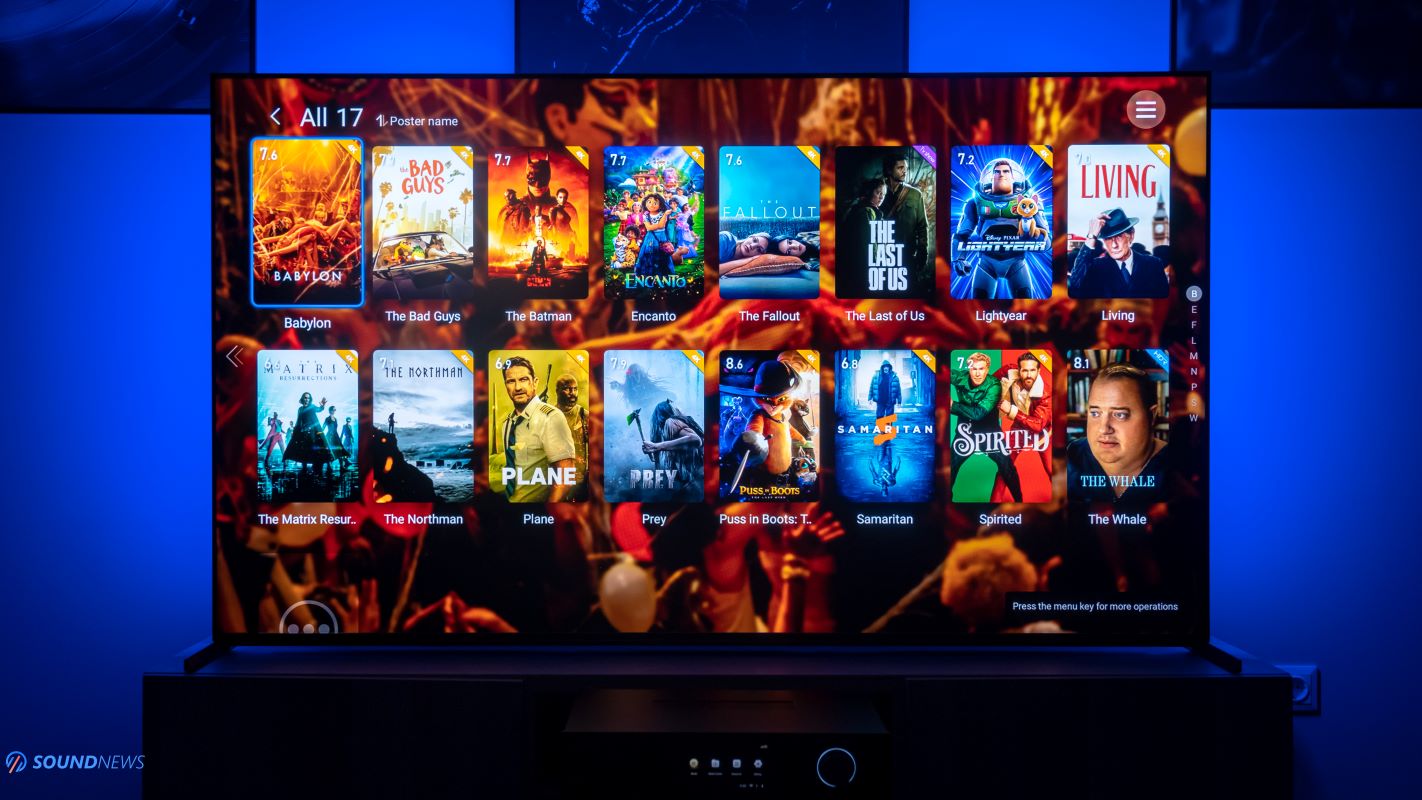
II. Video Performance
Zidoo NEO Alpha is equipped with a Realtek RTD1619DR ARM Cortex-A55 hexa-core CPU and with an ARM Mali-G51 GPU, combined with 4 GB of DDR4 RAM and 512Gb of ROM memory used for storage. Before I tell you a good deal about its performance as a video player, I need to confess that my media player before it was…drum roll…an external Samsung SSD connected to a USB port of my TV, using the built-in media player.
That was grey territory for me. I thought that external media players would be more convenient at storing and managing a huge movie collection, but I never thought that such units could potentially improve the picture quality.
The first thing that I liked was the so-called Poster Wall which isn’t only bringing a beautiful interface for movies stored on internal or external storage, but I liked seeing the format, the bit rate, the IMDB, and Rotten Tomatoes rating! That’s beyond cool! Before starting a Netflix movie, I would always check its rating via IMDB, as I don’t have the time for mediocre movies. NEO Alpha completely solved that issue, always showing the rating in advance which I find helpful.
Its main HDMI output supports the 2.0A standard: 4K 60fps/12-Bit/HDR/BT2020/YCbCr 4:4:4 chroma subsampling, including Audio Passthrough. When it comes to video decoding it supports 4K 60fps, HEVC/H.265, 12-bit HDR10, HDR10+, HLG and Dolby Vision standards, or in much simpler words, every single audio and video format available. It can even upscale standard definition or HD content to 4K resolution which worked better compared to the upscaling of my TV (Sony XR75-X95J). It can even upconvert HDR10 into Dolby Vision and there are many other interesting features a cinephile would find useful.
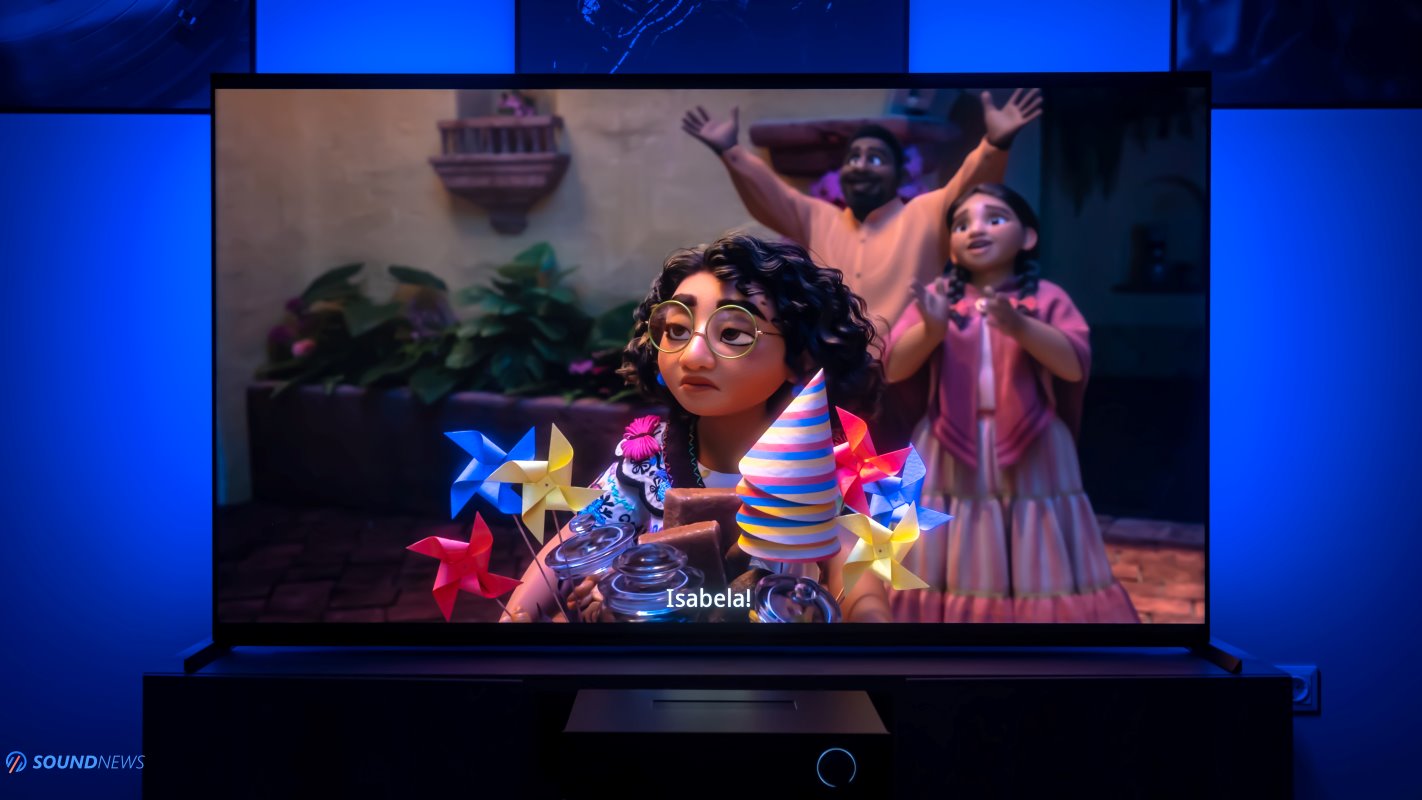
After connecting an external Samsung SSD, the Poster Wall refreshed in a few seconds and its content appeared on the screen. I don’t think I’m skilled enough to explain to you how and why the Zidoo looked better than plugging that same SSD into my TV, but I kid you not that the picture quality improved. The blacks were blacker and bright spots felt even brighter and more details were popping around dark objects. Shadow details improved, there were more highlights in dark scenes and a smoother color gradation. The Zidoo can also sync the refresh rate of the movie with that of the TV, so you can get an authentic cinematic experience. Some people had minor issues with its predecessor (NEO S), but in two months I watched more than ten movies in different HDR formats and I never got a hiccup.
Its main competitors like Dune and Zappiti include native Blu-Ray menu playback and Zidoo provides native support for such menus which is kind of cool. My TV supports Dolby Vision content and I can’t go without mentioning how natural and real the latest Top Gun movie looked on the screen. At times it felt like a flashlight was directed toward my face and all in all, I can’t complain about its video performance.
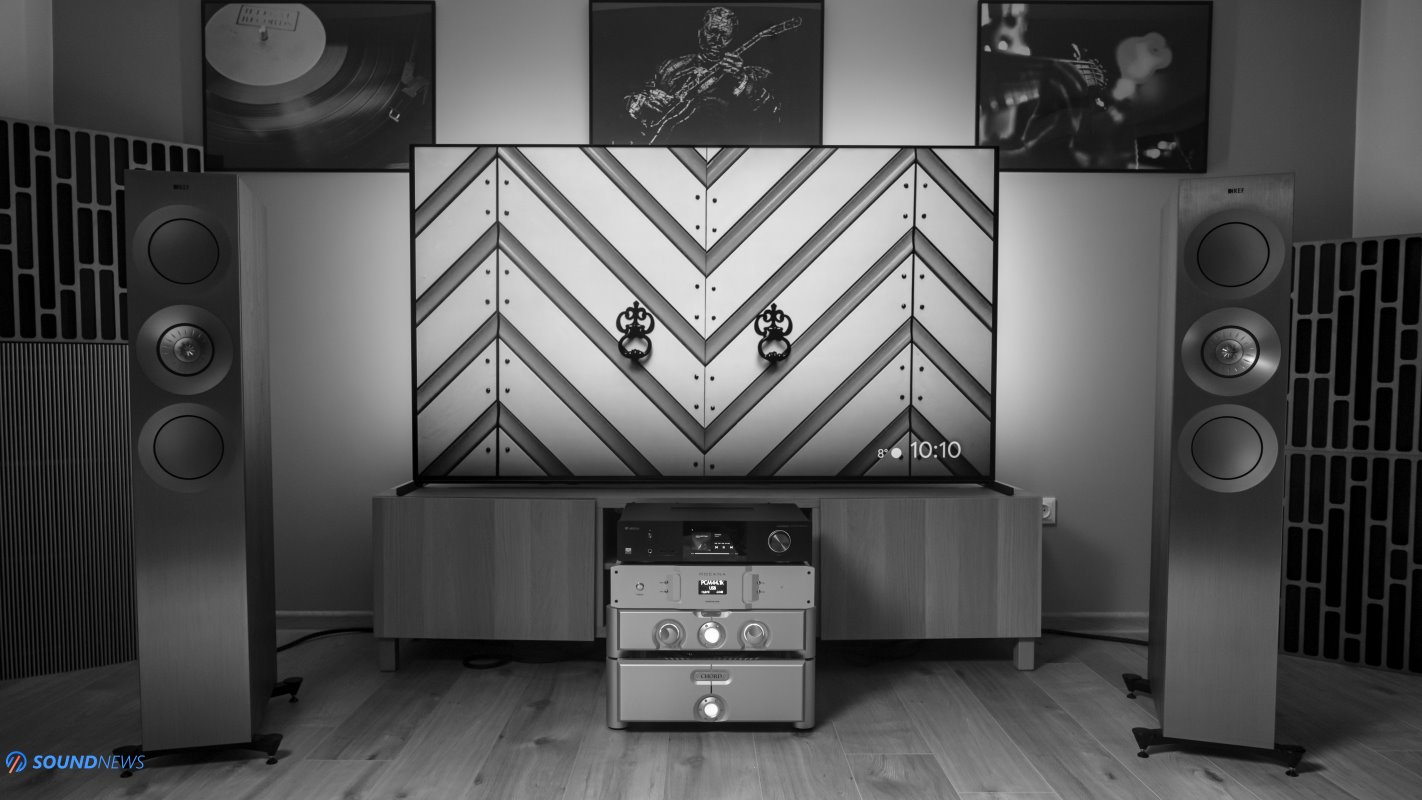
My Conclusions
There were signs in the sky that a dedicated streamer could uplift third-party DACs, especially when used as a Roon endpoint, bypassing operating systems and noisy USB ports. But hearing is believing, as Rockna Wavedream Signature ascended higher grounds and Chord DAVE’s performance went even higher than that. If Roon isn’t your thing, then you can use your Spotify & Tidal account or use AirPlay together with an Apple Music subscription which should offer similar results.
As a DAC-only unit, I don’t have much to complain about. It wasn’t coloring my music, it didn’t limit dynamics, for the most part disappearing from the chain and letting the music flow. It followed every rule a serious DAC should possess, starting with a three-stage power supply implementation and then with an outstanding component selection. It followed my linearity curve; it provided an extended frequency response and it always sounded clean and highly entertaining. Background noises were nowhere to be spotted even with ultra-sensitive IEMs and it had enough power on tap even for a few planar-magnetic headphones.
It’s media-player felt equally impressive, providing a sharper, brighter, and more colorful image compared to the stock media player of my TV. Shadow highlights felt improved, there were smoother color gradations and standard definition files looked better than ever before due to nicer hardware upscaling. Sincerely, there is little I can complain about a unit like this, easily winning our highest Gold Award.

Sure, I would like to have a CNC-machined case instead of a bent one, but that would make it more expensive and nobody wants that. I recently upgraded my electronics going with a silver color scheme and it would be killer if Zidoo would offer their NEO Alpha in a raw silver enclosure somewhere down the road.
Zidoo NEO Alpha will set you off €/$3000 and you can get it directly from their web store right here. In case you’re getting one, please let me know in the comments section below, and don’t forget to press that Subscribe button over YouTube, it means a lot to me.
PROS:
- Simple & minimalist & future-fi
- Great build quality, excellent I/O options
- This is the most feature-packed unit we tried as of yet! There isn’t a function that NEO Alpha doesn’t have
- Clean and highly resolving DAC section that won’t color the sound
- Great preamplifier section, could easily bypass a dedicated preamp
- Noiseless performance in both a stereo & headphone setup
- Enough power on tap even for a few planar headphones
- Impressive component selection and power supply implementation
- Great music & video player, will play every possible format
- Improved the picture quality versus the built-in media player of my TV
- Sounds fun and technical at the same time
- Uplifts external USB DACs and grants them a cleaner signal
CONS:
- I wish it offered an I2S output
- Plasticky volume wheel is no bueno, on top of that it offers a lower physical resistance
- Pricey…but worth it
ASSOCIATED EQUIPMENT:
- DACs: Rockna Wavedream Signature XLR, Chord Electronics DAVE, SMSL D400EX, SMSL SU-10, Gustard R26, Gold Note DS-10 PLUS & PSU-10 EVO
- Wireless Streamer & Music Server: Zidoo NEO Alpha, Rockna Wavedream NET
- Roon Core: Roon Nucleus, Rockna Wavedream NET
- DDCs: Denafrips Gaia, Singxer SU-6, Matrix X-SPDIF 3
- DAPs: FiiO M17, M11S, Shanling M7, M6 Ultra, Hiby R6 III, RS2
- Headphone Amps: Trafomatic Primavera, Trafomatic Head 2, Enleum AMP-23R, Ferrum OOR + HYPSOS, Burson Soloist 3X GT, Flux Lab Acoustics Volot
- Preamps: Chord Ultima 3 Pre
- Power Amps: Chord Ultima 5, Burson Timekeeper 3X GT (x2)
- Loudspeakers: KEF Reference 3, Musician Knight 1, Sound of Eden Crescendo UNO
- IEMs: FiiO FH9, FH7S, Meze Rai Penta, LittleDot Cu KIS, 7Hz Timeless, Kinera Skuld & others
- Full-sized headphones: Erzetich Charybdis & Phobos V.2021 & Mania, HiFiMan Susvara & HE1000SE & Arya Stealth, Meze Elite & 109 PRO, Audeze LCD-5 & LCD-4, Sennheiser HD800S, Kennerton Rognir (planar) & Vali, Apos Caspian, Sendy Peacock & Apollo, HarmonicDyne Poseidon & others
- Interconnects: Crystal Cable Reference2 Diamond, QED Reference (x2), Topping TCX1 (x2)
- USB Cables: Supra USB Excalibur (x2), Chord C-USB, Matrix Hi-Fi USB
- HDMI Cables: Supra 8K HDMI 2.1 (x2)
- Speaker cables: Kimber PR8, Audioquest Type4
- Power Cables: Isotek EVO3 Premier (x3), iFi Audio SupaNova (x2)
- Balanced Isolation Power Conditioners: PLiXiR Elite BAC1500 (stereo setup), Elite BAC400 (headphone setup)
